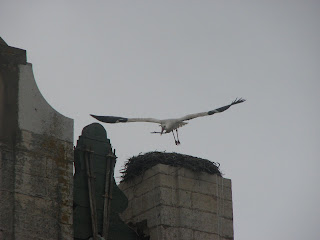We decided to take a two week vacation in the Algarve region of Southern Portugal. The following pages will hopefully give you an idea of what we did and what we saw.
We left Comox very early and travelled via Vancouver to Toronto. This was a day before we were due to fly from Toronto to Faro as that flight only goes once week and to miss it by trying to do the whole journey in one day was a bit too risky we felt. It also gave us the opportunity to do something interesting while in Toronto.
We left Comox very early and travelled via Vancouver to Toronto. This was a day before we were due to fly from Toronto to Faro as that flight only goes once week and to miss it by trying to do the whole journey in one day was a bit too risky we felt. It also gave us the opportunity to do something interesting while in Toronto.




































































